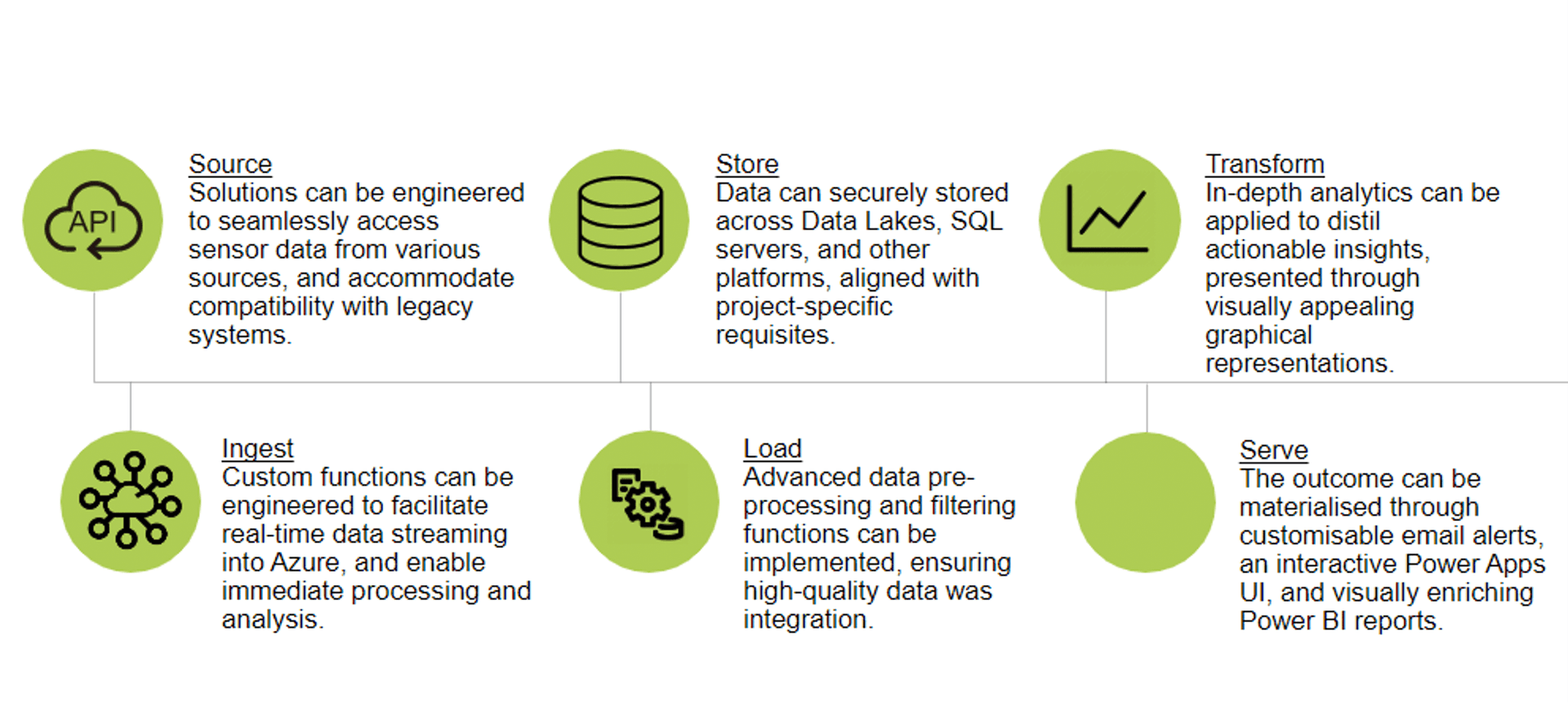
An end-to-end solution that unifies real-time data streaming from various sensor types into a centralised platform, providing a bespoke user interface and customised alerts. The Rail Sensor Alert system assists engineers in reducing reaction time to critical infrastructure alerts compared to traditional manual methods, thereby saving valuable time, and enhancing overall productivity.
Project Summary
AECOM has installed a large number of sensors on the rail infrastructure (rail tracks, overhead equipment, adjacent structures, bridges, or retaining walls) that record movements (rotation and displacements). All movements are monitored, and when specified thresholds are exceeded, AECOM is contractually obliged to investigate the movement, identify if it is a genuine alert that requires attention, and notify the client within the specified timeframe set by the contract (usually 90 minutes from the initial alert).
Without the AECOM Rail Sensor Alert System, on-call engineers have to log in to the data provider portal, navigate through several pages to collect all the necessary data to verify the authenticity of the alert, collate all the data into an email, and forward it to the client. Due to the time-consuming nature of the current process, there have been multiple occasions where performing the analysis and generating subsequent outputs to the client has breached current SLAs.
The AECOM Rail Sensor Alert System not only reduces the time required to gather all the relevant information but also offers a user-friendly UI to the engineers to compose the final email to the client and interact with the sensors by adding or removing sensors from the quarantine list (to allow or block further notifications).
Key Features
- Sensor data combination from various sources.
- Data standardisation through data pipelines and ETL process.
- Tailored Email alerts.
- Bespoke User Interface through Power Apps.
Solution
Initially, the AECOM Digital Business Analyst team conducted an extensive requirement-gathering process that involved interviews, workshops, observations, case studies, document analysis, and data flow diagrams to identify the key information that the engineers gather and pass to the client.
As a next step, the AECOM Digital team of Data Scientists and Data Engineers identified the most optimal method to promptly collect the data from various sources by undertaking API performance analysis and liaising with data vendors - a step crucial due to the nature of the task.
Subsequently, an ETL (Extract, Transform, Load) process was deployed in the Azure cloud environment where data is collected at very frequent intervals, then transformed and saved in the desirable format. The results are analysed and checked against predefined thresholds, generating email alerts where necessary.
Lastly, the AECOM Digital Power Platform Team developed a bespoke User Interface where engineers can review the alert details, add conclusions (genuine alert or accidental), and send the email alerts to the client. Engineers can also interact with the data by adding or removing sensors from the quarantine list, preventing or allowing them to generate further alerts.
Added Value
The current manual methodology for collecting data and composing email alerts to clients is labour-intensive, resulting in breaches of the current SLAs. AECOM has demonstrated that the development of a digital tool reduces the reaction time to alerts by 90%. The positive feedback received from the engineering team underscores the effectiveness of the digital tool, highlighting its role in enhancing efficiency and eliminating errors in their workflow.
